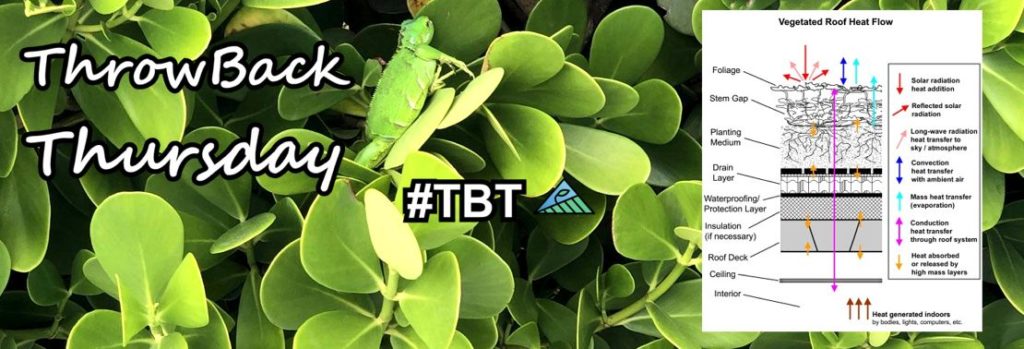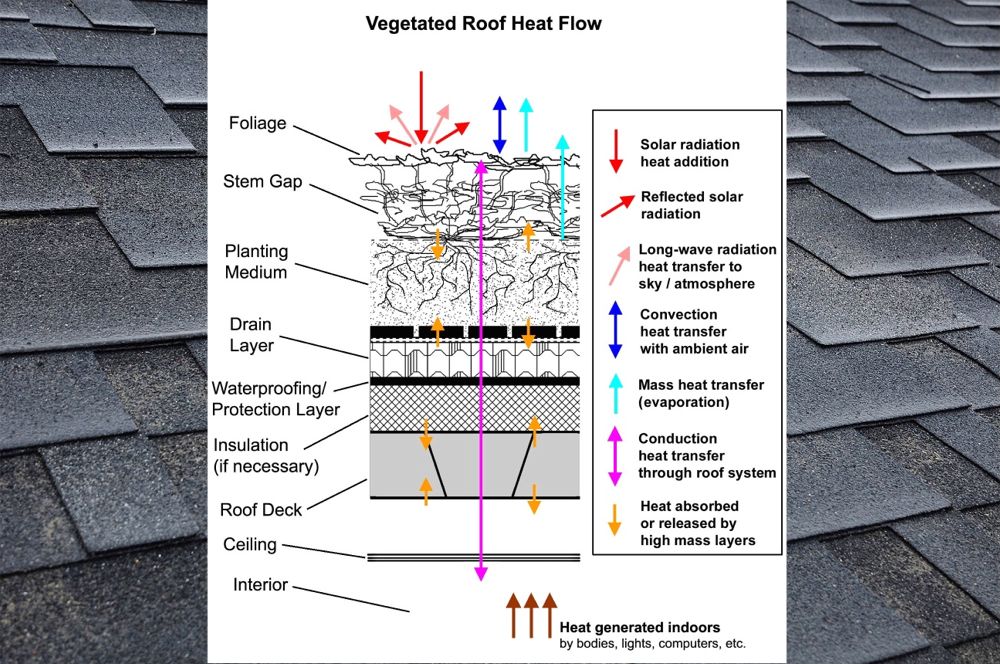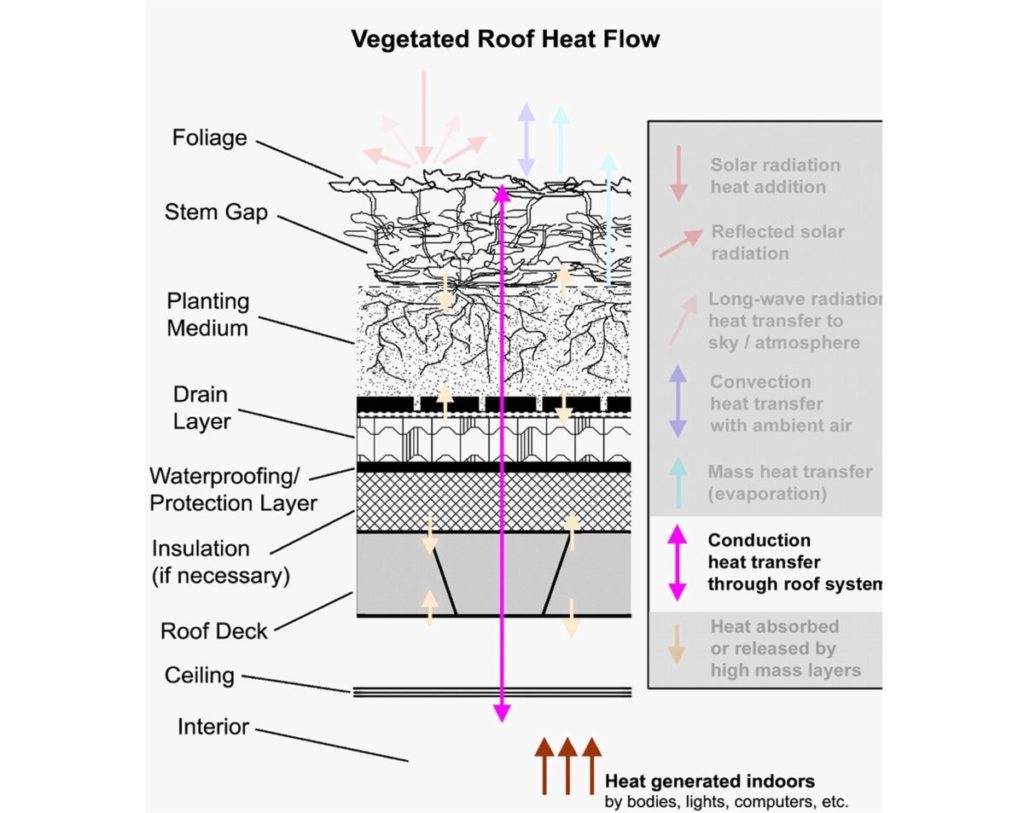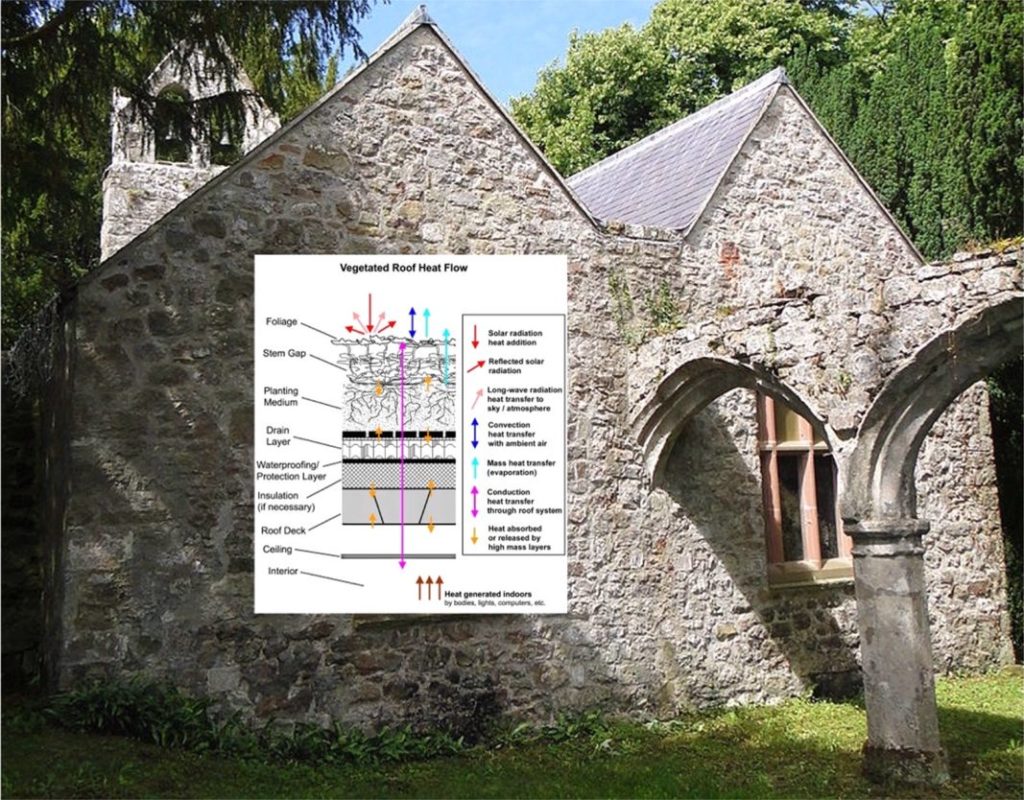“Cooler than Cool Roofs: How Heat Doesn’t Move Through a Green Roof”
“Cooler than Cool Roofs: How Heat Doesn’t Move Through a Green Roof” is the 7-part Green Roof Energy Series explaining the key aspects of green roof heat transfer issues and the best ways to take advantage of a green roof’s energy benefits by Greenroofs.com collaborator Chris Wark.
Green Roof Energy Series Part 7: The Secret and How To Use It
By Chris Wark, Energy Editor – Originally posted April 28, 2011
Now that you have made an intellectual investment in six installments on the technicalities of heat transfer through a green roof, here is all that information summed up in two simple Green Roof Energy Principles:
1. Foliage uses all the heat transfer mechanisms nature makes available in order to remain within a few degrees of the ambient outside air temperature. If it can’t do this, the plant goes dormant, dies, or transmogrifies into a cactus. This means that a green roof with active, healthy foliage can be assumed to remain very near the current outdoor temperature. In cooler climates, it will typically be a bit above ambient temperature when the plants are dormant.
For those who may enjoy doing the energy calculations, this property of foliage means that the surface of a green roof can be accurately simulated as a nearly perfect solar reflector during summer and with fairly high emissivity (I typically use 0.9 for active vegetation and 0.7 for dormant green roofs).
2. The greater the thermal mass, the more it dampens diurnal temperature swings. This means that for an intensive green roof, the middle of the soil can be regarded as always staying close to the overall average seasonal temperature, especially if the soil can remain damp.
For extensive green roofs, this effect diminishes with depth and will also depend on climate, media density and the amount of insulation under the green roof. For building energy calculations, this part requires some engineering skill, depending on one’s level of interest in things like accuracy and precision.
Energy calculation tools such as eQUEST and EnergyPlus can model solar reflectivity and thermal mass quite easily (although the accuracy of the thermal mass algorithm in eQUEST and other DOE-2 based programs is often questioned by engineers, including me).
We have covered some important ways in which foliage deals with all the excess solar heat energy. If plenty of water is available, most plants can stay within just a few degrees of the surrounding air temperature and many plants, like corn and cotton, can actually drop slightly below ambient temperatures when well irrigated.
But when water is scarce, the leaves of most sun-loving plants are still able to stay within 10 to 15 degrees Fahrenheit through convection, reflection, and heat emission. Or in the case of cacti, the outer skin can get hotter but the interior stays cool because of thermal mass.
That’s five different ways of dealing with heat as needed (or dispensing with all five when collecting more heat is better during winter) for a total of six different thermal management tools that can be described by our two Green Roof Energy Principles.
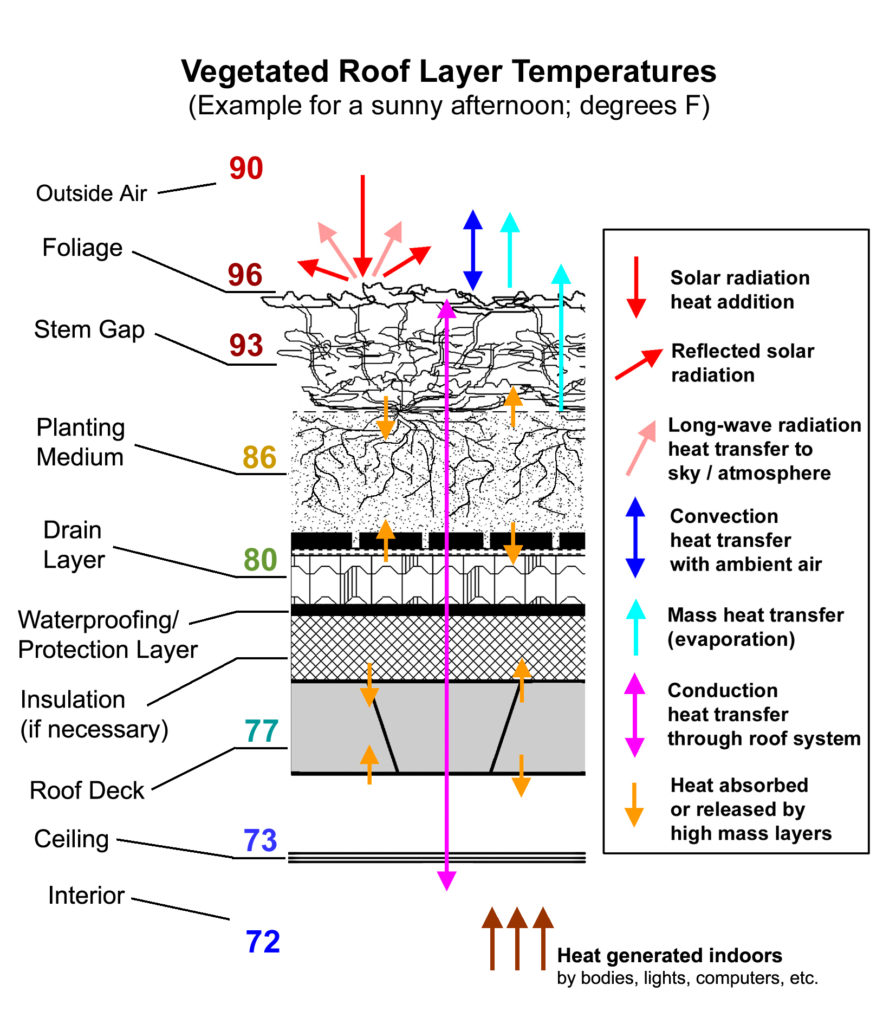
Copyright 2011 Christopher Wark
Being clever humans who can solve almost any problem that nature throws at us, we should be able to duplicate these energy principles without the cost and liability of messing up a perfectly good roof with dirt, water, plants, birds, bugs, and the dreaded roof snakes. After all, we have thousands of years of experience competing with nature and transforming bits of it into tightly controlled environments for ourselves.
For the most part, building more weight into the roof structure is not a problem for a talented engineer, so now we just need to invent a cheap, maintenance-free, super-long-lasting product that can reject all solar energy during summer and absorb a little heat when it gets cold outside.
So far, the closest roofing engineers have come is cool roof technology which only performs two of the five jobs needed to duplicate Principle 1. The best roofing companies can do so far (without using super reflective coatings) is to keep a roof within 25 degrees above ambient air temperature during the summer – about the same as the skin of a cactus under extreme conditions – but typical performance is usually worse and decreases with time.
This technology can also result in the roof temperature dropping below the outside air temperature during winter which hurts more than it helps in colder climates (this problem has been addressed with thermo-chromic coatings, but they are still experimental). While costing more than traditional waterproofing, a cool roof is still initially cheaper than a green roof but then requires replacement periodically, making it more expensive in the long run.
Another way to battle nature is to attempt to beat it at its own game. For several years I looked at potential roof covering strategies using bio-mimicry – copying nature’s tactics for controlling heat through convection, evaporation, and emissivity.
As I mentioned, cool roof material technology can already take care of radiative cooling. Evaporative coolers (cooling towers) are standard equipment in commercial air conditioning systems, even if they are configured a bit differently than what we want for mimicking plant evapotranspiration. But unfortunately, engineering a roof covering that can convect heat to the air as efficiently as foliage is a challenge and often brings one back to something that looks like feathery grass. The real trick is to incorporate all of these technologies into a single product.
Let’s say some well-funded engineers actually did come up with a roof covering with all these features. What they would have is an artificial green roof that works almost as well as a real one during the summer but probably not during the winter and only lasts for a few years because plastic and metal don’t regenerate like real plants. And such a roof covering would not be cheap or absorb CO2 or support the local ecology.
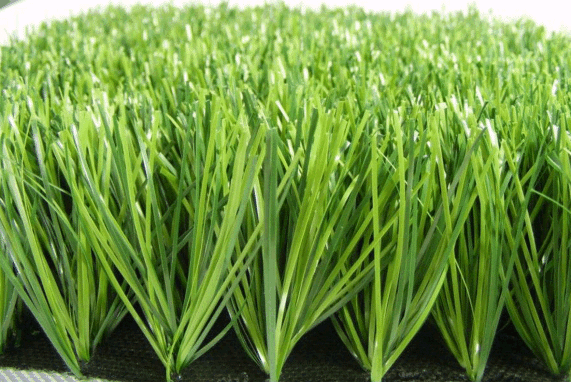
“Worry free” roof grass. Image: AV Turf
Instead of bio-mimicry, green roofs are simply bio. They don’t copy nature, they are nature. And if nature has already optimized survival strategies for us, why reinvent it?
This is why a healthy green roof with nature-made components will always be way cooler than any man-made technologies. This is the beauty of working with nature instead of fighting it.
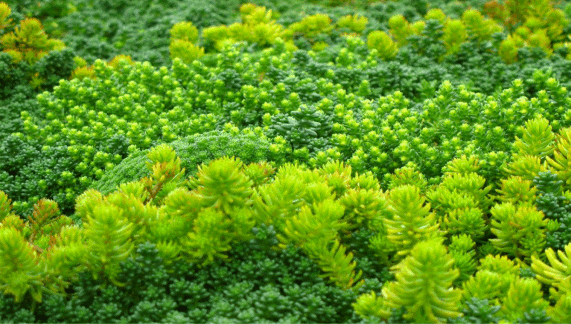
Naturally engineered sedum. Image: T+L Nursery
This brings us to the question of how best to take advantage of nature’s own technology: a living roof covering. What kinds of building situations can make the most of a green roof?
From an energy standpoint, a green roof will have its greatest impact on a large, single or two story building where solar heating is a major factor in the building’s energy usage, especially if considerable heat is also generated internally. The foliage will get rid of the solar heat and the media will absorb and slowly release internal heat or excessive outdoor heat at night.
Primary examples are single story office buildings, temperature controlled warehouses, big-box retail stores, and many manufacturing facilities. Homes with no attic or a poorly vented attic are also good candidates for a properly designed green roof.
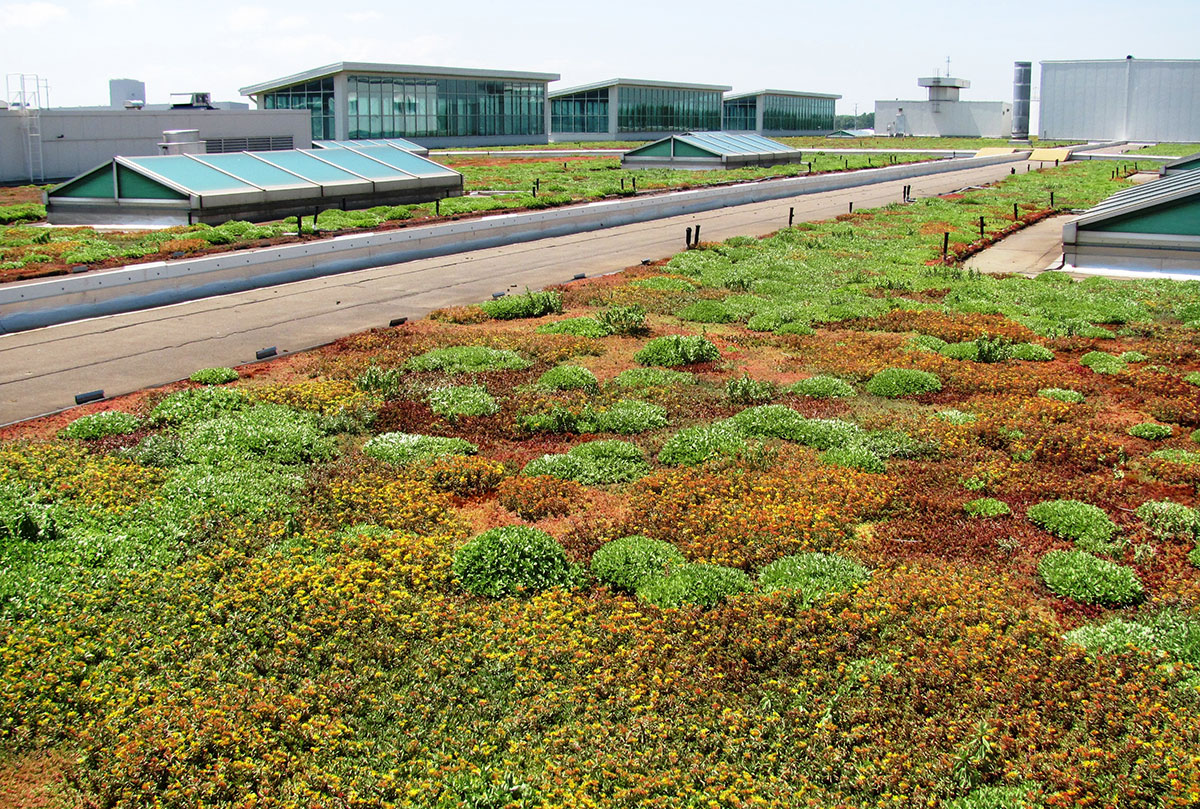
Ford Rouge River Plant. Image: Xero Flor America
The best geographic locations are moderately warm climates where there is a realistic possibility of completely eliminating roof insulation and significantly downgrading air conditioning. Areas that come to mind are:
- within a few miles of nearly all of the southern California coast
- one valley in from the coast (give or take a valley) for northern California up to Washington
- many eastern coastal regions south of New Jersey
This may look like a picky list, but the collective economies of these areas make up about 1/3 of the total U.S. economy. Ironically, these regions also have the fewest extensive green roofs in the U.S. Outside of the contiguous United States, similar types of coastal locations are equally good candidates and a few exceptional inland locations can also be found, such as southwestern China.
Less advantageous applications are buildings where there is little or no need for temperature control (e.g. unconditioned warehouses in moderate climates), structures where solar heating is not an issue (e.g. buildings that are shaded), and buildings with a small roof/envelope area ratio (e.g. skyscrapers).

The green roof atop the 38-story Helena 57 West in New York City only benefits the 38th floor. For this building’s envelope, the windows have the biggest energy impact. Image: StreetEasy
The reality of building design is that the only way to know how much a green roof will improve energy efficiency is to have a whole-building energy model created by someone with a thorough understanding of the technical portions of this article.
Energy savings from a green roof, as with any architectural feature, can be realized in any situation, but the actual amount of savings is only found by considering the interdependence of building design, utilization, and location, which are always unique to a given project. Sales data, most green-whatever guidelines, and even some industry standards should never be considered absolute since they are for specific cases. They can be devalued by even a small change in a building envelope feature or mechanical system design, as is often demonstrated in a whole-building energy model. I know those changes well since I analyze them every week.
There you have it. All the complexities of how a green roof deals with heat wrapped up in two basic Green Roof Energy Principles. “So then,” I hear you asking yourself, “what was the point of dragging us through those other six articles?” Two reasons:
1. Process. Not only do you now know the magic answer, you know how it came to be. The what and why of where I got the answers were revealed so that this conversation can continue intelligently. I look forward to having my process questioned so that we can all learn more.
2. Rigor. The green roof world is awash in bad assumptions of how heat moves through a green roof. These assumptions are usually based on uninformed intuition instead of good old fashioned rigorous methodology based on the First Law of Thermodynamics. It was important to address some of the most prevalent misconceptions with a meaningful discussion because nothing is greener than knowledge.
There are many reasons to cover a roof with plants. You can’t beat the aesthetics, storm water runoff control is often a favorite, and sometimes energy savings starts out at the top of the list only to end up near the bottom because of a lack of understanding on how to quantify the savings.
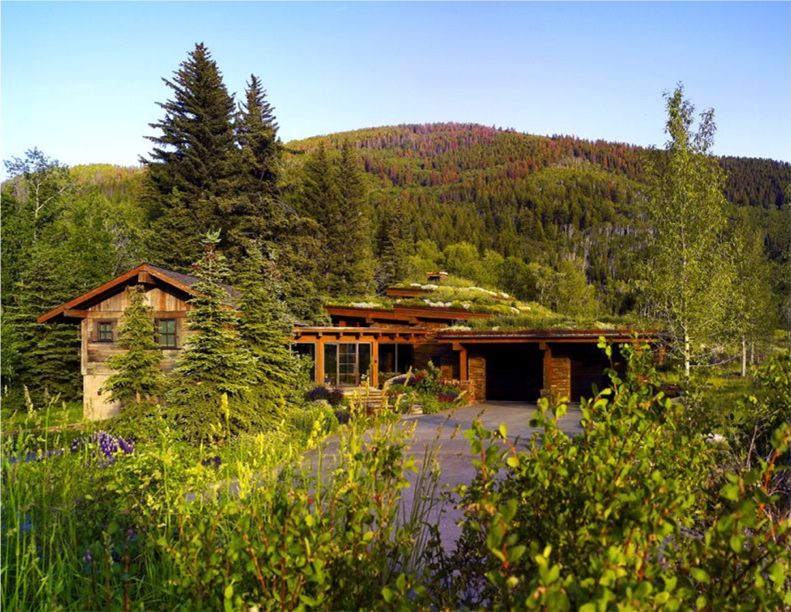
Watersong. Image Glen Ellison, Land Designs by Ellison, Inc.
My hope is that this Green Roof Energy Series will help to keep energy toward the top of those lists for the right buildings and the right reasons.
Copyright 2011 Christopher Wark
~ Chris Wark
References:
Selected references used in this series:
1. Incropera, Frank and DeWitt, David. Introduction to Heat Transfer. John Wiley and Sons, 1990. Classic heat transfer text with all the theory, equations and proper procedures an engineer needs to calculate conductive, convective, radiative, and mass heat transfer correctly.
2. Mills, A.F. Basic Heat and Mass Transfer. Irwin, 1995. Ditto.
3. Cengel, Yunus A. and Boles, Michael A. Thermodynamics: An Engineering Approach. McGraw Hill, 1994. Another excellent, very popular textbook – contains my favorite explanations of the laws of thermodynamics.
4. 2009 ASHRAE Handbook: Fundamentals. Most of the principles and guidelines necessary to understand the ASHRAE Standards.
5. http://5e.plantphys.net Zeiger, Eduardo, and Taiz, Lincoln. Plant Physiology (Online), 5th edition. Sinauer, 2010. Good online companion to the text. Energy issues are addressed most directly in Chapter 9.
6. MacAdam, Jennifer W. Structure and Function of Plants. John Wiley and Sons, 2009
7. www.fao.org/docrep/X0490E/x0490e00.HTM Comprehensive guidelines on crop evapotranspiration from the Food and Agriculture Organization of the United Nations. Includes considerable background information, calculation methods and explanations, and world-wide climate and crop data.
8. www.cimis.water.ca.gov/cimis/infoEtoOverview.jsp Background information for the California Irrigation Management Information System (CIMIS).
9. www.dpi.qld.gov.au/26_9829.htm Good, concise overview of agricultural evapotranspiration calculations from the Australian government. Particularly handy for fans of the metric system.
10. http://faculty.unlv.edu/landau/adaptations.htm Concise outline of desert plant adaptations.
11. www.eoearth.org/article/adaptations_of_desert_plants This section of the Encyclopedia of Earth has not been updated for some time but still gives some great descriptions of desert plant survival.
12. www.cwnp.org/adaptations.html Central Washington Native Plants website has some great images and provides a brief overview of plant survival methods in the arid region of central Washington state.
13. www.buildinggreen.com/auth/article.cfm/1998/4/1/Thermal-Mass-and-R-value-Making-Sense-of-a-Confusing-Issue/ Excellent discussion on how to use the word “insulation” when talking about thermal mass, including the pretend R-values that are used to describe massive construction elements.
14. www.concretethinker.com/solutions/Thermal-Mass.aspx Naturally, folks in the concrete business are more than happy to talk about thermal mass. This page has a nice concise explanation.
15. www.nyc.gov/html/ddc/downloads/pdf/cool_green_roof_man.pdf There are quite a few green building manuals out there, including plenty of other governmental resources. Even though I am partial to this one, it should still not displace References 1 through 3.
16. www.commercialwindows.umn.edu/issues_energy1.php Although this page is for windows, it gives a great technical summary of solar radiation, reflectivity, absorptivity, and emissivity.
17. www.omega.com/literature/transactions/volume1/emissivityb.html#s1 Good emissivity chart of common non-metallic materials, many of which are used in construction. Emissivity can be difficult to grasp and comparing some of these values for familiar materials might help.
Publisher’s Note:
See Chris Wark’s entire 7-part Green Roof Energy Series from 2010-2011 online and in PDF: “Cooler Than Cool Roofs: How Heat Doesn’t Move Through a Green Roof.“
Christopher G. Wark

Christopher Wark is Principal of Wark Energy Consulting and the founder of Ponix MicroAg LLC, a development-stage company that is creating a line of compact plant enclosures for the CEA market. Chris has over 30 years of multidisciplinary engineering experience providing mechanical, analytical, and electronics support and services to manufacturers, universities and national labs. He holds Bachelor and Master of Science degrees in Mechanical Engineering (with a minor in Materials Science) from Washington State University where his graduate work focused on thermodynamics, fluid dynamics, and combustion.
For the past 19 years, Chris has focused his efforts on the development and promotion of technical solutions in architecture and construction. He has provided energy and environmental quality analysis, CFD modeling, and LEED consulting services for several engineering and building consulting firms in New York and California. In 2002, Chris established SHADE Consulting/Green Roof Innovations (GRI) with his wife Wendy.
With GRI, Chris developed several innovative modular eco-roof systems and in 2010, Chris designed a modular planting system in partnership with Guiyang Chuangjia High-Tech Accelerator Co. LTD in Guiyang, China. In Guiyang, he saw how most of the apartment balconies and rooftops were filled with vegetable gardens. The idea of providing an improved environment for food production in built environments, along with key GRI design concepts, inspired the development of the patented pPod™ miniature greenhouse developed by Ponix MicroAg.
Contact Christopher Wark at: cwark@pponix.com, 917-565-6919.
 Greenroofs.comConnecting the Planet + Living Architecture
Greenroofs.comConnecting the Planet + Living Architecture


